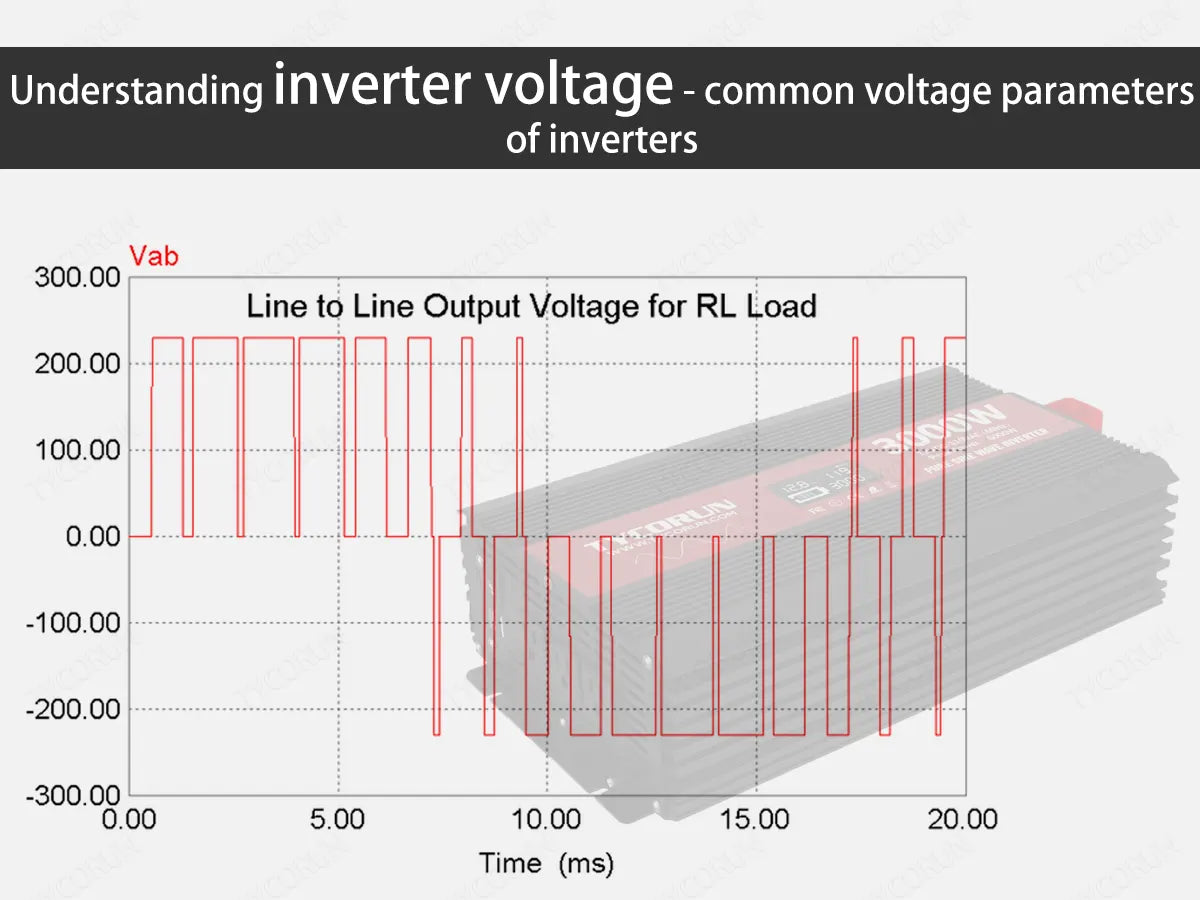
In the realm of power electronics, the inverter voltage is a critical parameter that dictates its performance, compatibility, and safety. Understanding the intricacies of inverter voltage is essential for anyone seeking a reliable and efficient power supply.
Let's embark on a comprehensive journey to unravel the mysteries surrounding inverter voltage, exploring its nuances, applications, and the Tycorun inverter's unique characteristics.
Main content:
- What is a 12v to 240v inverter?
- How many volts does an inverter use?
- What is the rated input voltage of an inverter?
- What is the start voltage of an inverter?
- What is cut off voltage in inverter?
- How do you check the voltage on an inverter?
- What is the best voltage for an inverter?
- Is 12v or 24v better for an inverter?
- What is the maximum input voltage in inverter?
- What happens if voltage is too high for inverter?
- How do I choose an inverter voltage?
- What should inverter output voltage be?
- How can the quality of inverter output voltage be measured?
- How do you adjust the output voltage of an inverter?
- Tycorun 3000w inverter voltage reviews
- Conclusion
- FAQs
What is a 12v to 240v inverter?
A 12V to 240V inverter is a pivotal device designed to convert direct current (DC) power from a 12-volt battery into alternating current (AC) power with a nominal output of 240 volts.
This conversion is vital for running household appliances, electronic devices, and other equipment that require standard AC power. The 12V inverter serves as a bridge between battery systems commonly found in vehicles, boats, or solar setups and the conventional power needs of various devices.
How many volts does an inverter use?
Understanding the inverter voltage is crucial for selecting the right equipment for your power system. Inverter voltage typically falls into three main categories: 12V, 24V, and 48V. These values signify the nominal direct current (DC) input voltage required for the inverter to function optimally.
What is the rated input voltage of an inverter?
Inverters come in various configurations, each designed for specific power systems. Common rated input voltages include 12V, 24V, and 48V. The choice depends on the application, the size of the power system, and the available power source. A 12V inverter is commonly used for smaller applications, such as in vehicles or small off-grid setups.
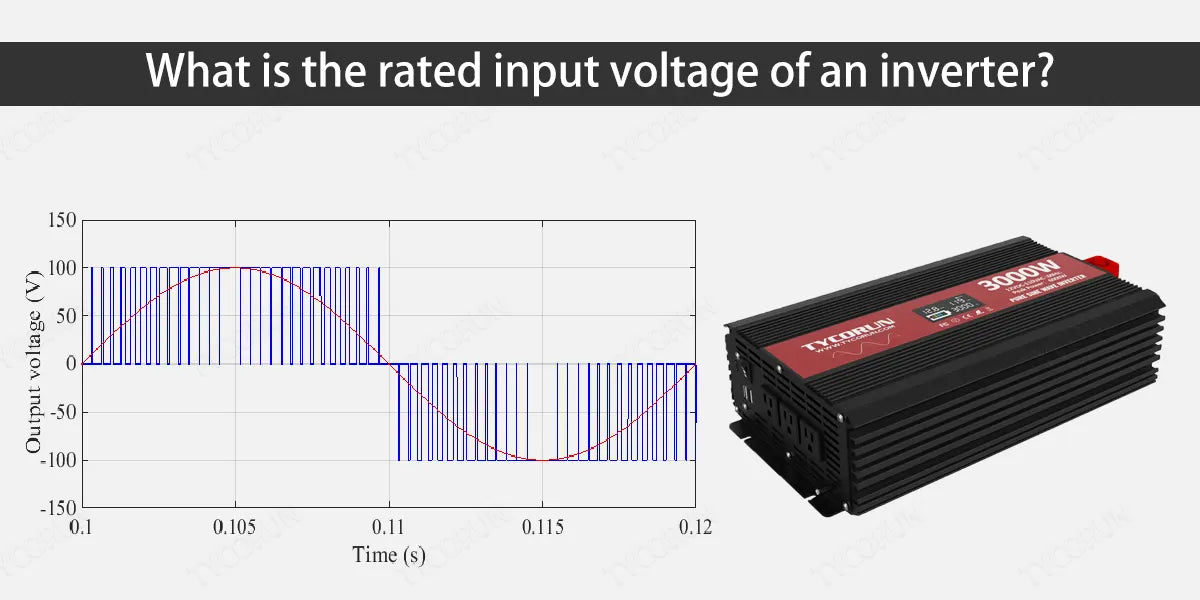
What is the start voltage of an inverter?
The start inverter voltage is the minimum input voltage required for the inverter to initiate the conversion process. In the case of a 12V inverter, the start inverter voltage is typically around 9.5VDC. This threshold ensures that the inverter can begin its operation reliably without placing undue stress on the connected battery.
What is cut off voltage in inverter?
The cut-off inverter voltage is a crucial parameter that determines when the inverter should cease operating to prevent damage to the connected battery. For a 12V inverter, the cut-off inverter voltage is often set around 9.5VDC. Dropping below this threshold triggers a shut-off mechanism to preserve the battery's health and longevity.
How do you check the voltage on an inverter?
Modern inverters, such as the advanced Tycorun pure sine wave inverter, are equipped with a real-time inverter voltage monitoring function. This feature allows users to monitor the current inverter voltage of the connected battery, providing valuable insights into its status. The real-time display is often presented on the inverter's LCD screen, ensuring ease of access for users.
What is the best voltage for an inverter?
Choosing the optimal inverter voltage depends on various factors, including the inverter's design, the power requirements of connected devices, and the available power source. The common dilemma often involves deciding between a 12V and 24V inverter.
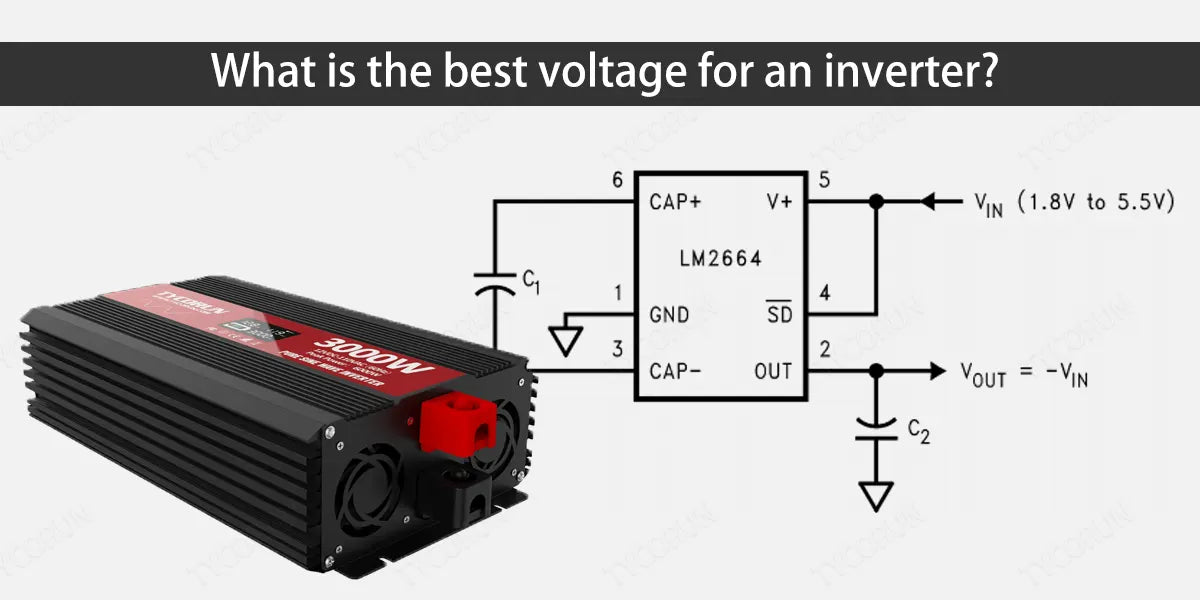
Is 12v or 24v better for an inverter?
The decision between a 12V and 24V inverter hinges on the specific power system requirements. While a 12V inverter is suitable for smaller applications, a 24V inverter is often preferred for larger systems. The 24V configuration offers advantages in terms of efficiency and power handling, making it a popular choice for residential and commercial setups.
What is the maximum input voltage in inverter?
The maximum input voltage for an inverter is a critical specification that ensures the device operates within safe limits. For a 12V inverter, the maximum input inverter voltage is typically around 16VDC. This safety margin provides a buffer to accommodate fluctuations in the power source and protect the inverter from potential damage.
What happens if voltage is too high for inverter?
Exceeding the specified maximum input voltage for an inverter can lead to various issues. These include overheating, potential damage to internal components, and the risk of a malfunction. To mitigate these risks, manufacturers often incorporate overvoltage protection mechanisms into their inverters.
How do I choose an inverter voltage?
Choosing the right inverter voltage involves a thoughtful evaluation of the power requirements for the intended application and the characteristics of the available power source. Factors such as the size of the system, the types of devices to be powered, and the overall efficiency of the inverter are essential considerations.
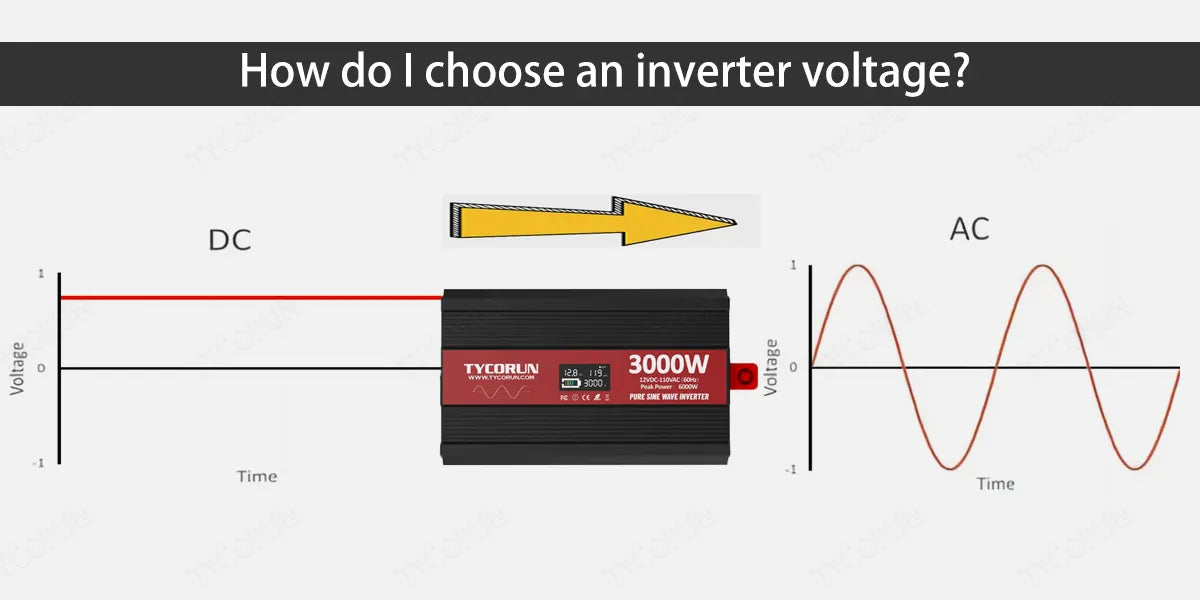
What should inverter output voltage be?
The inverter output inverter voltage is a critical aspect that must align with the standard alternating current (AC) voltage required by connected devices. The quality of the inverter output voltage is crucial for ensuring the safe and efficient operation of sensitive electronics.
When choosing an inverter, we need to pay attention to the use scenario. In different countries, the applicable AC voltage is different, and most countries use 110v, 120v output inverter voltage. You can confirm on the search engine or see how much AC voltage the home appliance label uses.
How can the quality of inverter output voltage be measured?
The quality of inverter output voltage is measured by assessing its waveform. A pure sine wave output is considered the gold standard, as it replicates the smooth and continuous waveform of utility grid power.
Pure sine wave inverters, like the Tycorun 12v inverter, are prized for their ability to deliver high-quality and distortion-free power. Inverter type comparison of the article can refer to pure sine wave vs modified sine wave inverter.
How do you adjust the output voltage of an inverter?
In most cases, the output inverter voltage is factory-set to match the standard voltage requirements of the region. Users typically do not need to adjust the output voltage manually.
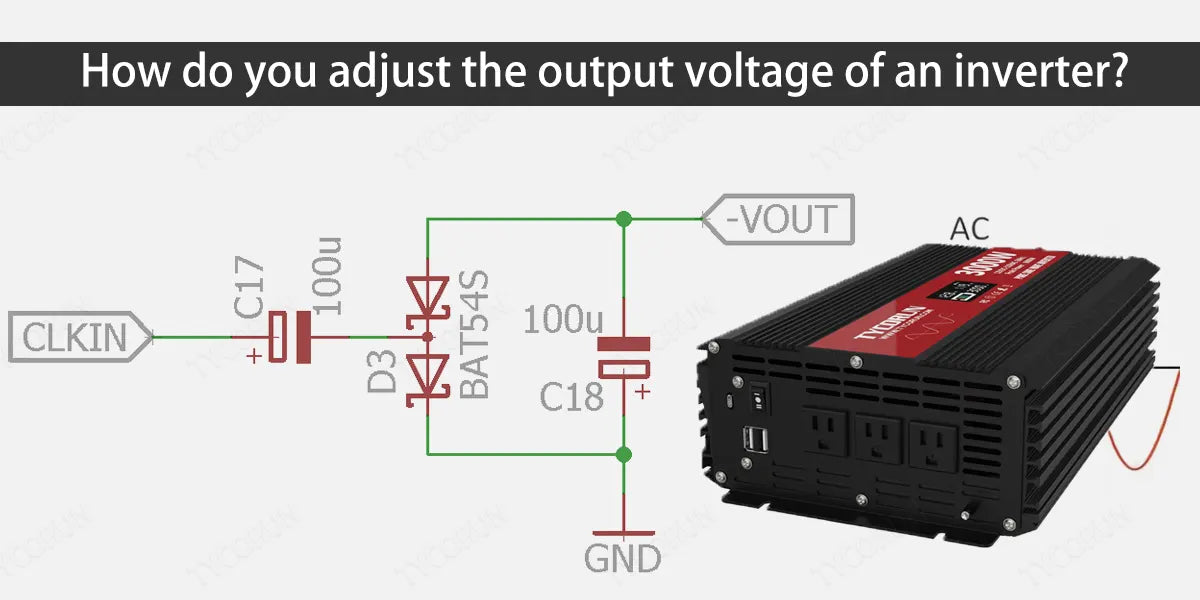
Tycorun 3000w inverter voltage reviews
The Tycorun 3000w inverter stands out as an exemplar of cutting-edge inverter technology, boasting a range of features that elevate its performance and user experience.
The Tycorun 3000w inverter boasts a rated input voltage of 12V, making it compatible with standard 12-volt battery systems. Its input voltage range is between 9.5-16VDC, with overvoltage and low voltage shutdown mechanisms at 16VDC and 9.5VDC, respectively.
Users appreciate the real-time voltage monitoring function displayed on the inverter's LCD screen, inverter voltage accuracy was at 98%, providing valuable insights into the system's status.
These specifications showcase the Tycorun 3000w inverter's commitment to operating within optimal inverter voltage ranges, ensuring safety, efficiency, and longevity. If you are looking for the best inverters for car, rv inverter or home solar inverter, you can choose to use Tycorun 12v inverter.
|
|
500w
|
1000w |
2000w
|
3000w
|
|
Product image
|
||||
|
Price & Discount
|
$49.9(-29%)
|
$98.99(-29%)
|
$199.90(-20%)
|
$229.00(-23%)
|
|
Rated Input Voltage
|
12VDC
|
12VDC
|
12VDC
|
12VDC |
|
Continuous Power
|
500w
|
1000w
|
2000w
|
3000w |
|
Peak Power
|
1000w |
2000w |
4000w |
6000w |
|
More information |
Click to get the details |
Click to get the details |
Click to get the details |
Click to get the details |
Conclusion
In conclusion, the inverter voltage is a multifaceted realm that intertwines with various considerations. From selecting the right input voltage to ensuring the quality of output voltage, each facet plays a crucial role in shaping the inverter's performance.
The Tycorun pure sine wave inverter, with its advanced features and robust design, exemplifies the evolution of inverter technology, providing users with a reliable and efficient power solution.
FAQs
What is the voltage of inverter battery on load?
The inverter voltage on load varies depending on factors such as the connected devices, power consumption, and the overall health of the battery. Real-time monitoring, as provided by the Tycorun 3000 inverter, allows users to assess the inverter voltage dynamically during operation.
Why is my inverter output voltage low?
Low output inverter voltage can stem from issues such as a weak battery, loose connections, or internal faults. Thoroughly troubleshooting these aspects can help identify and rectify the cause of low output inverter voltage.
Why is inverter output voltage so high?
An abnormally high inverter output voltage may indicate a malfunction in the voltage regulation circuit. Addressing this issue promptly is crucial to prevent potential damage to connected devices.
Can low voltage damage an inverter?
Operating an inverter with consistently low input inverter voltage can lead to inefficiencies, overheating, and potential damage. Maintaining the input voltage within the specified range is essential for the optimal performance and longevity of the inverter.
Related posts: inverter waveform, inverter lifespan, inverter protection




